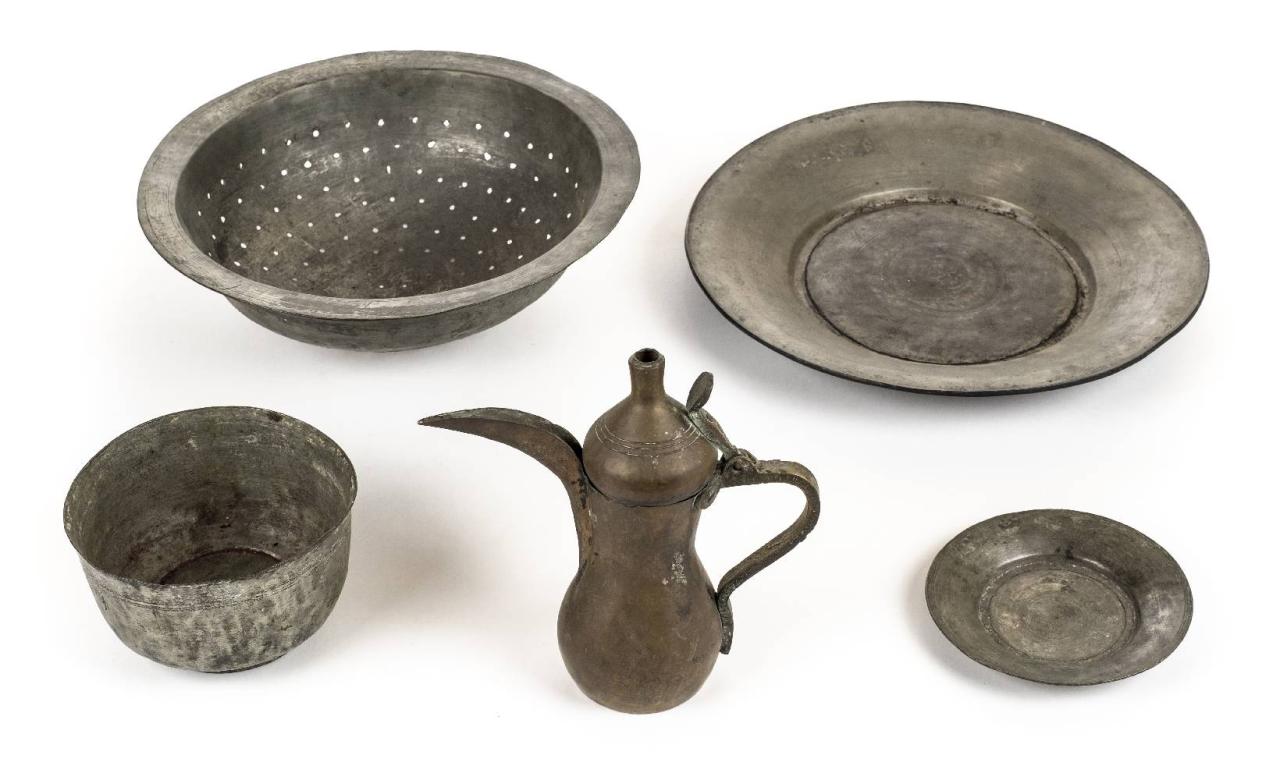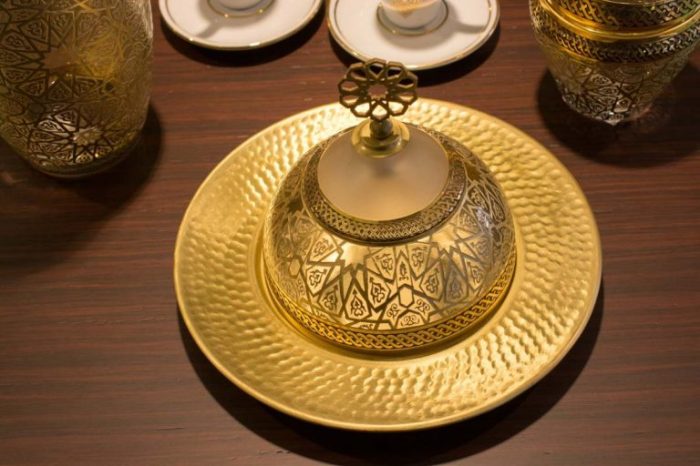Condiment for an Ottoman Leader embarks on a captivating exploration of the culinary world of the Ottoman Empire, where condiments played a pivotal role in cuisine, diplomacy, art, and medicine.
From traditional Ottoman condiments to their modern adaptations, this narrative weaves a rich tapestry of flavors, cultural exchange, and historical significance.
Historical Condiments for Ottoman Leaders

Condiments played a significant role in Ottoman cuisine, adding flavor and enhancing the dining experience of Ottoman leaders. These condiments were not only culinary delights but also held cultural and social significance.Traditional condiments used by Ottoman leaders included a wide variety of ingredients, such as spices, herbs, fruits, and vegetables.
Some of the most popular condiments included:
Harissa
A spicy paste made from roasted red peppers, cumin, and garlic, harissa added a fiery kick to dishes. It was often served as a condiment for grilled meats or as a dipping sauce for bread.
Muhammara
A roasted red pepper and walnut dip, muhammara had a smoky and nutty flavor. It was typically served as a spread on bread or as an accompaniment to kebabs.
Cacık
A refreshing yogurt-based sauce, cacık was made with cucumbers, garlic, and dill. It was often served as a side dish with grilled meats or as a cooling dip for vegetables.
Turşu
Pickled vegetables, such as cucumbers, carrots, and cabbage, were a staple condiment in Ottoman cuisine. They added a sour and tangy flavor to dishes and were often served as a side dish or as a garnish.These condiments were not only culinary delights but also held cultural and social significance.
They represented the rich culinary traditions of the Ottoman Empire and were often used to symbolize hospitality and generosity. Sharing condiments with guests was a way to show respect and appreciation.
Modern Adaptations of Ottoman Condiments

Ottoman condiments have undergone significant adaptations in modern times, reflecting the evolution of Turkish cuisine and the influence of global flavors. These adaptations have preserved the essence of traditional Ottoman condiments while introducing innovative ingredients and techniques.
One notable adaptation is the use of modern cooking appliances, such as blenders and food processors, to create smoother and more refined condiments. Additionally, the availability of a wider range of spices and ingredients has allowed for the creation of new flavor combinations and variations.
Contemporary Variations
- Harissa: A spicy chili paste traditionally made with roasted peppers, garlic, and cumin. Modern variations may incorporate additional spices, such as paprika, coriander, and cayenne pepper.
- Muhammara: A dip made from roasted red peppers, walnuts, and pomegranate molasses. Contemporary adaptations often include feta cheese, yogurt, or tahini for added creaminess.
- Cacık: A yogurt-based sauce made with cucumbers, garlic, and dill. Modern interpretations may add mint, parsley, or even avocado for a refreshing twist.
Condiments as Culinary Diplomacy

Condiments played a significant role in Ottoman diplomatic relations, serving as both culinary delicacies and diplomatic tools. They were used to foster alliances, establish trade routes, and promote cultural exchange.
One notable example is the use of Turkish coffee as a diplomatic gesture. The Ottomans introduced coffee to Europe in the 16th century, and it quickly became a popular beverage in diplomatic circles. The sharing of coffee was seen as a sign of friendship and goodwill, and it helped to establish trade relations between the Ottoman Empire and European countries.
While the condiment of choice for an Ottoman leader may remain a culinary mystery, the topic of traffic regulations in Florida offers a more straightforward inquiry. Can you uturn on red in Florida ? The answer to this question, unlike the enigmatic flavors that graced the palates of Ottoman sultans, can be found with a simple click.
As we return to the realm of Ottoman cuisine, we ponder once more the tantalizing secrets held within those ancient spice jars.
Spices and the Silk Road
Spices were another important condiment used in Ottoman diplomacy. The Ottomans controlled a vast network of trade routes, including the Silk Road, which connected them to the spice-producing regions of Asia. Spices were highly prized in Europe, and the Ottomans used their control over the spice trade to gain political and economic influence.
- Pepper was a particularly valuable spice, and the Ottomans used it to secure alliances with European powers. In 1536, the Ottoman Sultan Suleiman the Magnificent sent a gift of pepper to King Francis I of France as a sign of friendship.
- Cinnamon was another important spice that was used in Ottoman diplomacy. The Ottomans controlled the cinnamon trade in the Indian Ocean, and they used cinnamon to establish trade relations with China and other Asian countries.
Cultural Exchange
The sharing of condiments between the Ottomans and other cultures also led to significant cultural exchange. The Ottomans introduced new spices and cooking techniques to Europe, which influenced European cuisine. In turn, the Ottomans adopted European cooking techniques and ingredients, which led to the development of new Ottoman dishes.
The exchange of condiments between the Ottomans and other cultures was a mutually beneficial process that helped to promote understanding and cooperation between different peoples.
Condiments in Ottoman Art and Literature

Condiments held a prominent place in Ottoman culture, not only on the dining table but also in the realms of art and literature. They were depicted in various forms, from paintings and miniatures to literary works, where they carried symbolic meanings and served as literary devices.
Depictions in Art
Ottoman paintings and miniatures often featured depictions of condiments, showcasing their importance in daily life. In these artworks, condiments were portrayed in various settings, from royal banquets to everyday meals. They were depicted in bowls, jars, and other containers, adding a touch of color and realism to the scenes.
The depiction of condiments in art also reflected the Ottoman’s appreciation for the culinary arts and their attention to detail.
Symbolism and Cultural Significance
In Ottoman literature, condiments played a significant role in conveying cultural and social meanings. They were often used to symbolize wealth, status, and hospitality. For example, in the epic poem “Shahnameh,” the hero Rustam is described as eating a meal that includes various condiments, reflecting his high social status.
Condiments were also associated with generosity and hospitality, as they were often offered to guests as a sign of welcome and respect.
Metaphors and Literary Devices
Ottoman writers also employed condiments as metaphors and literary devices. In poetry, condiments were used to describe emotions and experiences. For example, the poet Rumi wrote, “My heart is a bowl of vinegar, and my tongue is a spoon of sugar,” comparing the sweetness of love to the acidity of vinegar.
Condiments were also used in prose to create vivid imagery and convey sensory experiences.
Health and Medicinal Properties of Ottoman Condiments: Condiment For An Ottoman Leader

Ottoman condiments were not only culinary delights but also played a significant role in traditional medicine. Many herbs and spices used in these condiments possessed medicinal properties that were well-documented in Ottoman medical texts.
Antioxidant and Anti-inflammatory Properties
Many Ottoman condiments, such as turmeric, ginger, and cinnamon, contain potent antioxidants that help protect the body from oxidative stress and inflammation. These properties have been scientifically validated, with studies showing that these spices can reduce inflammation and protect against chronic diseases such as heart disease and cancer.
Antimicrobial and Antibacterial Properties
Several Ottoman condiments, including garlic, onions, and oregano, have antimicrobial and antibacterial properties. These properties were recognized by Ottoman physicians, who used these condiments to treat infections and wounds. Modern research has confirmed these traditional uses, demonstrating that these spices can inhibit the growth of bacteria and fungi.
Digestive Health
Many Ottoman condiments, such as cumin, fennel, and mint, have been traditionally used to aid digestion. These spices can stimulate digestive enzymes, reduce gas and bloating, and alleviate gastrointestinal discomfort.
Potential Health Benefits of Incorporating Ottoman Condiments into Modern Diets, Condiment for an ottoman leader
Incorporating Ottoman condiments into modern diets can provide numerous health benefits. Their antioxidant, anti-inflammatory, antimicrobial, and digestive properties can contribute to overall health and well-being. These condiments can be used in various dishes, adding flavor and nutrition to meals.
Questions and Answers
What were the most common condiments used by Ottoman leaders?
Vinegar, honey, pomegranate molasses, and various spice blends were widely used.
How did condiments contribute to Ottoman diplomatic relations?
Condiments were often exchanged as gifts and served at banquets to foster alliances and establish trade routes.
What is the significance of condiments in Ottoman art and literature?
Condiments are depicted in paintings and miniatures, symbolizing wealth, hospitality, and cultural diversity.
